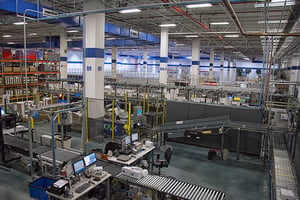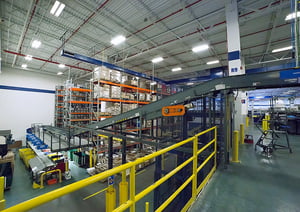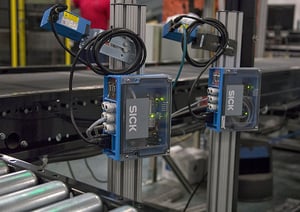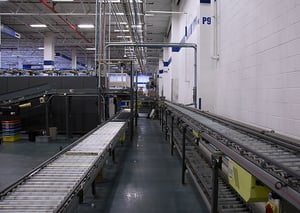 Small to mid-sized companies face many challenges in today’s business climate. In the “Amazon” era, customer
Small to mid-sized companies face many challenges in today’s business climate. In the “Amazon” era, customer
expectations continue to rise, presenting a great need for businesses to continually improve processes and methods. This constant need for improvement is all in the hopes of mitigating challenges and turning them into wins throughout the customer buying cycle.
In terms of shipping customer products, the struggle can be very real. There are many things to consider and often overcome. A manual shipping system requires accessible inventory and humans to execute every aspect of bringing that inventory to customers. Inventory must be chosen based on a customer’s order and picked so that it can be packaged. The item must then be sent through a series of checks before it is packaged in the correct sized box and weighed for shipping. After the item is labeled, the correct shipping method must be chosen. The prepared shipment must be brought to the end of the shipping cycle for sorting prior to carrier pickup. There is a lot of movement in a manual system and humans must execute the steps within a manual system.
Potential challenges like space and time constraints, volume, deadlines, efficiency, quality and consistency are all reasons to consider automated shipping. Adopting an automated shipping system can be a game-changer when it comes to resolving modern shipping struggles and increasing elevated customer expectations.
Overcoming Space and Time Constraints While Handling Business Volume
Prepping for shipping items usually requires a lot of space, both for storage of items and for humans to prepare items for use. Building boxes, prepping items, figuring out weight for shipping and labeling shipments can actually take up more room and require more time than many might think.
Having an automated system aids the human and automated elements seamlessly throughout the process. It provides assistance with creating boxes, weights and measures, labeling and sorting outgoing shipments. It also helps an order get picked and brought through to shipping with a great deal of ease. With checks and balances built in, it helps the people performing these functions because they can take the time to insure quality and accuracy quickly and efficiently. Checks and balances also help validate the automated system, insuring that boxes are made correctly, labels are properly applied, etc. This makes handling volume of business much easier to manage, even when there are fluctuations. Since there are usually volume increases and decreases throughout a normal year in just about any business, this aspect of automated shipping can be crucial to managing those fluctuations with ease and success.
Automated material handling systems are the first element in a successful automated shipping system. Automated warehouse solutions such as ASRS systems, crane-based systems or shuttle systems all make the picking process faster. These types of systems are customized and can be designed to utilize available space in a very efficient way. This maximizes the ability to store large amounts of inventory. With a lot of inventory available, handling business volume becomes much easier to accomplish.
 Efficiently Supporting the Human Element of the Shipping Process
Efficiently Supporting the Human Element of the Shipping Process
Technology and the time it saves allows small details to be performed by humans that will ultimately affect the bottom line. As an example, packagers can do things like score boxes to reduce the height of the box and thus reduce the cost of internal materials required to ship a product. In a system that is not automated, packagers might not previously have time to perform a small but cost saving detail.
A conveyor system that transports goods from picking through to shipping saves time. It allows human operators to package more items without having to leave their work stations to transport goods to the next step in the process. At the end of the conveyor system is where shipments are weighed and assessed for shipping method. Items can be validated during this phase of shipping and sent to an automated sorting area based on carrier. A human operator can validate the information which is much easier and much less time consuming than weighing, labeling and sorting by hand. A good system should be redundant enough to handle the majority of validation. It should allow users to quickly access data to validate any errors and to track progress daily, weekly and monthly. Errors do happen and being prepared for them is the best way to resolve them quickly and efficiently.
Mid-sized companies like Radwell International have an automated system for shipping that works well. It is automated throughout the shipping cycle and this is how consistency is maintained for customers.
Providing Consistency
Because much of the tangible elements of the system, such as packaging, are automated, the level of consistency is high when an automated shipping system is implemented in a business environment. It is a good thing when a business can provide its customers with a seamless and consistent experience.
Meeting the ever-changing demands of a customer base that demands goods quickly and accurately will always be a challenge. By automating critical steps in the shipping process where there is room for error, a business can maximize efficiency and quality. Businesses that can provide services for customers more quickly and accurately will continually give themselves an advantage. Automating points in the fulfillment cycle can not only reduce errors but provide the ability for growth and ongoing process improvement.
To See Automated Shipping in Action
Photos by Julie Basello for Radwell International

